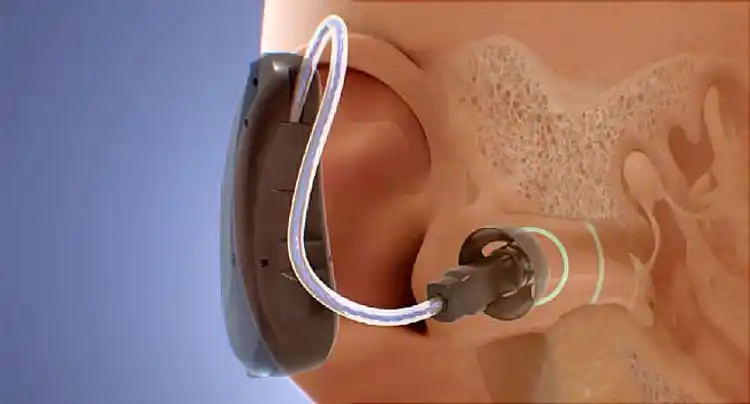How Do Hearing Aids Work?

Hide Video Transcript
Video Transcript
Hearing aids are small, electronic devices that amplify sound. While they can’t restore normal hearing, hearing aids can help you hear better by making certain sounds louder in both quiet and noisy situations. Hearing aids come in several styles that fit in or on your ear in different ways, including “behind the ear,” “in the ear,” “in the canal,” and “completely in the canal.” While the style may vary, all hearing aids have the same basic parts: a microphone, amplifier, speaker, and battery. Here’s how they work: First, the microphone picks up sounds from the environment. Then, a computer chip with an amplifier converts the sound waves into electrical signals. It analyzes and adjusts the sounds based on your hearing loss and the level of other sounds around you. These amplified signals are then converted back into sound waves and delivered to your ear through the speaker. In this way, hearing aids can improve your hearing and speech comprehension if your hearing loss is caused by damage to the sensory cells in your inner ear. The greater the damage to these cells, the more severe your hearing loss will be, and the more amplification you will need from a hearing aid in order to compensate. If you think you might have a hearing loss and could benefit from using hearing aids, talk to your doctor or audiologist for more information.

